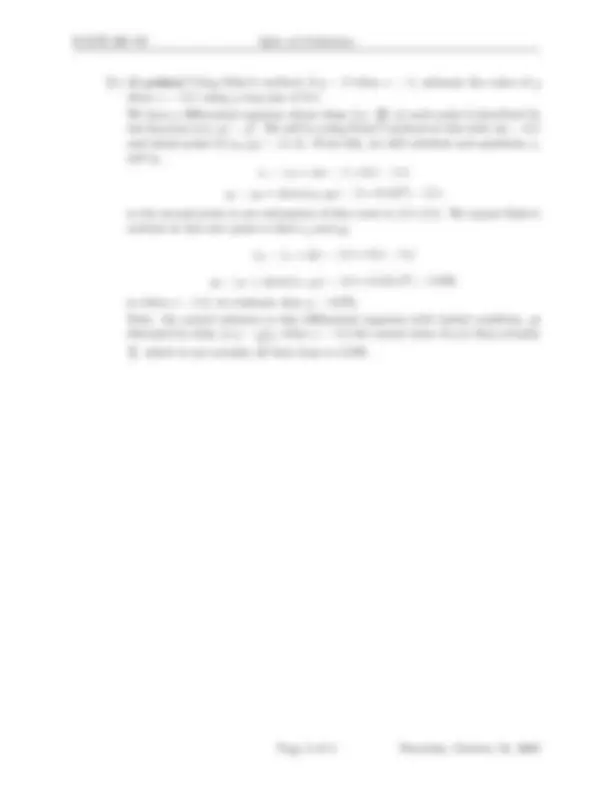



Study with the several resources on Docsity

Earn points by helping other students or get them with a premium plan


Prepare for your exams
Study with the several resources on Docsity

Earn points to download
Earn points by helping other students or get them with a premium plan
Community
Ask the community for help and clear up your study doubts
Discover the best universities in your country according to Docsity users
Free resources
Download our free guides on studying techniques, anxiety management strategies, and thesis advice from Docsity tutors
Material Type: Quiz; Class: CALCULUS II - M; Subject: Mathematics; University: University of Louisville; Term: Fall 2008;
Typology: Quizzes
1 / 3

This page cannot be seen from the preview
Don't miss anything!


1 2
2
4
6
8
10
12
To find the center of mass, we need first find the area A, x-moment Mx, and y-moment My:
0
(4x + 2) − (x^3 + 2)dx =
0
4 x − x^3 = 2x^2 −
x^4 4
0
Mx =
0
x[(4x + 2) − (x^3 + 2)]dx =
0
4 x^2 − x^4 =
4 x^3 3
x^5 5
0
My =
0
[(4x + 2)^2 − (x^3 + 2)^2 ]dx =
0
x^6 − 2 x^3 + 8x^2 + 8xdx
x^7 14
x^4 2
8 x^3 3
0
So the center of mass is
Mx A ,^
My A
108 21
0 for x < 1 2 x^3
for x ≥ 1
(a) (4 points) Verify that f (x) is a probability distribution function. A cursory inspection reveals that this function is non-negative throughout: 0 is non-negative everywhere, and (^) x^23 is non-negative as long as x > 0. The critical property to demonstrate that this function is a probability distribution function is simply that
−∞ f^ (x)dx^ = 1. We can simplify this somewhat by ignoring the region on which f (x) is zero, so that
−∞ f^ (x) =^
1 f^ (x)dx. We evaluate this as such:
1
f (x)dx =
1
x^3
dx
= lim b→∞
∫ (^) b
1
x^3
dx
= lim b→∞
∫ (^) b
1
x^3
dx
= lim b→∞
x^2
]b
1
dx
= lim b→∞
b^2
dx
= 1
(b) (4 points) For a random variable X described by the above probability distribution function, find P (X ≥ 10). We proceed as above but calculating P (X ≥ 10), which is
10 f^ (x):
∫ (^) ∞
10
f (x)dx =
10
x^3
dx
= lim b→∞
∫ (^) b
10
x^3
dx
= lim b→∞
b^2
dx
Thus, this random variable will only have a value greater than 10 in one out of every hundred tests.
(a) (4 points) Verify that y = (^5) −^1 x is a solution to this differential equation. We evaluate each side, substituting (^5) −^1 x in for y:
dy dx
d dx
5 − x
d dx
(5 − x)−^1 = (−1)
−(5 − x)−^2
= (5 − x)−^2
y^2 =
5 − x
(5 − x)^2
= (5 − x)−^2
Since these evaluations are identical, the assignment y = (^5) −^1 x indeed satisfies the differential equation.